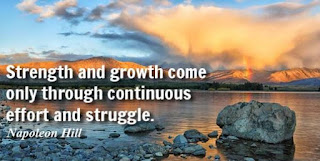Embodying George Couros's 8 Characteristics of the Innovator's Mindset can make us better leaders, teachers, and students. We cannot just learn empathy, problem finding (and solving), risk taking, networking, observing, creating, being resilient, and reflecting. We need to be able to apply these skills. We need our students to do the same.
|
EMPATHY: For others to understand empathy, it not only needs to be defined, but they need to see it. This can be done through videos and modeling. The more authentic and meaningful, the more engaged they will become. Once understanding and sharing the feelings of another is learned and demonstrated, it needs to be practiced is a safe environment and in a context that is understood. Only then can it be applied beyond that. By truly embracing empathy, new viewpoints will allow for better outcomes.
PROBLEM FINDERS (and SOLVERS): The same steps can be taken: learn, demonstrate, practice, and apply. If we don't have people finding issues or obstacles to being more efficient and productive, it's harder to develop solutions to become better.
RISK TAKERS: While learn, demonstrate, practice, and apply are key, having a safe and supportive environment with a growth mindset will allow more motivation and freedom to take risks and learn from failure.
NETWORK: We have to allow our teachers and students to collaborate, reflect, and deprivatize their practices with others (in and outside of their buildings). I do this through my state and national associations, but for the last three years, I have also learned so much from my Twitter contacts. One of the best networking tools was the Twitter Challenge by my colleague @MrDomagalski. It was so beneficial, I did it with my teachers.
OBSERVANT: This is another characteristic that needs to be learned, demonstrated, practiced, and applied. Instead of recreating the wheel, we need to be innovative by making it better, more personalized, and meaningful. We do this through research, observation, and analysis. Why do you think more people go to YouTube to learn something? They are seeing and observing what they want to learn.
CREATORS: To learn to be creative, we need to go beyond modeling. Sometimes this puts limits on others. Just because we do it a certain way, it's not the only way. I always want my teachers and students to come up with an even better, more creative way. When I don't put limitations, I always get better outcomes than I had even imagined.
RESILIENT: Learning, modeling, practicing, and applying are key to becoming resilient. Fostering a growth mindset where failure is a part of the learning is an authentic practice of life.
REFLECT: Reflective practices are one of the best core practices to learning. This practice also needs learned, demonstrated, practiced, and applied within and out of context. Meaningful learning grows from being reflective. This is even stronger when it is done within a network with similar interests and goals.
The common process for all of these characteristics is that they need to be learned, modeled, practiced, and applied to truly be developed. Having safe environment where risk taking and failure are not only accepted but expected will stimulate more motivation and growth for positive outcomes.







